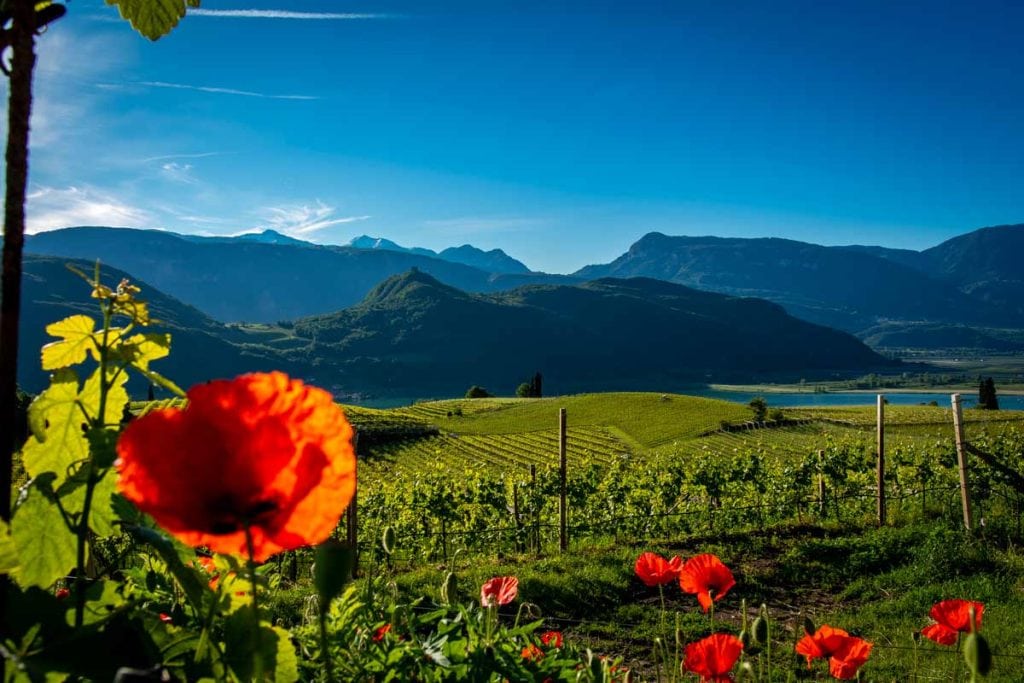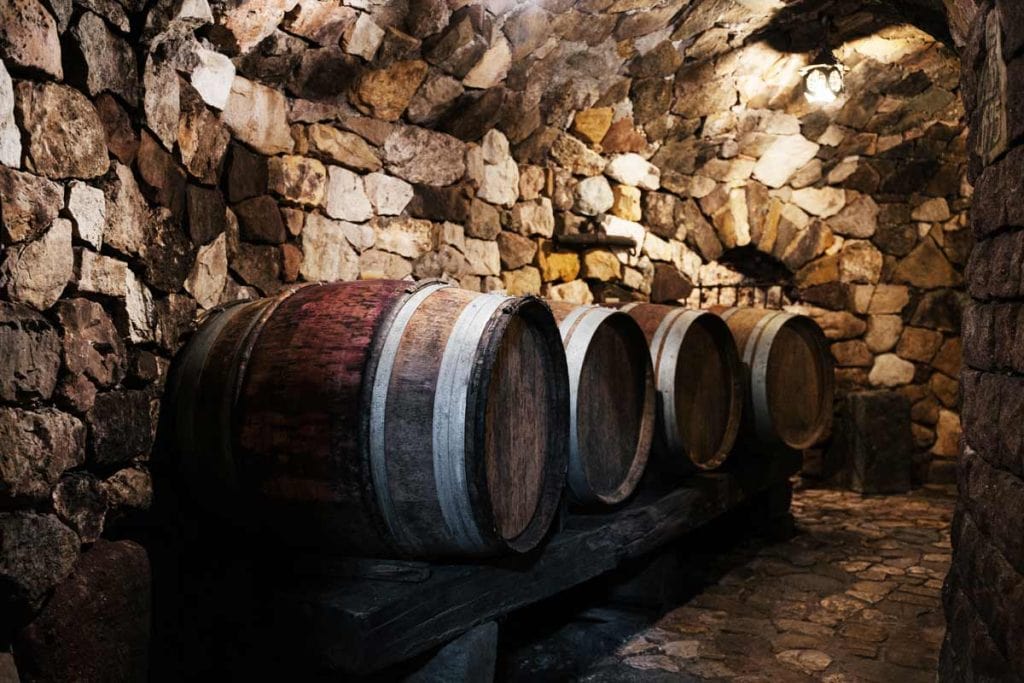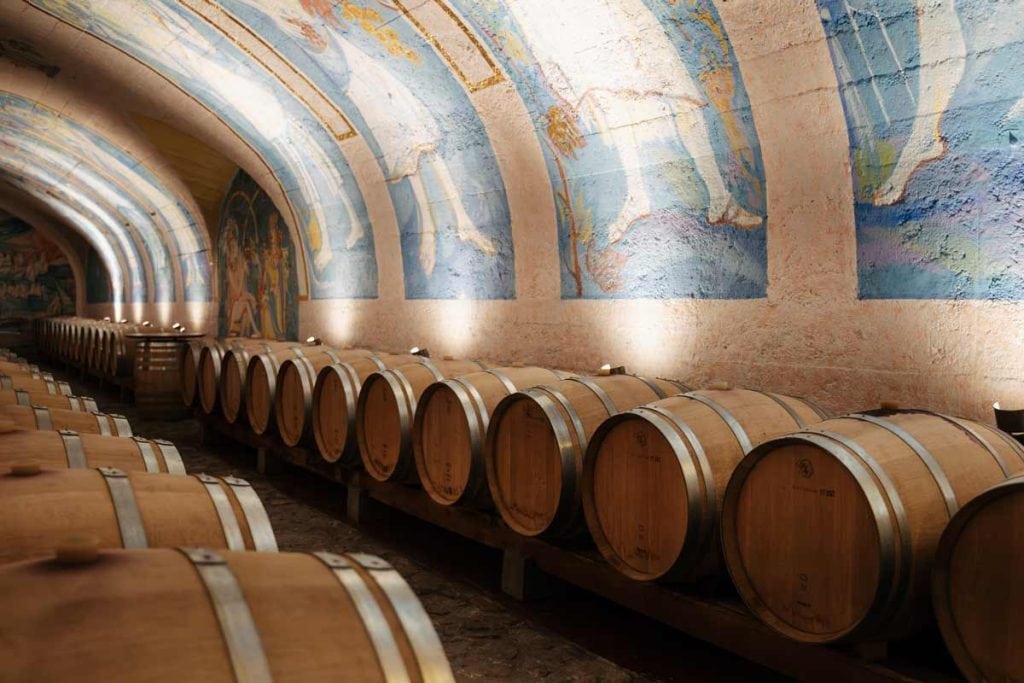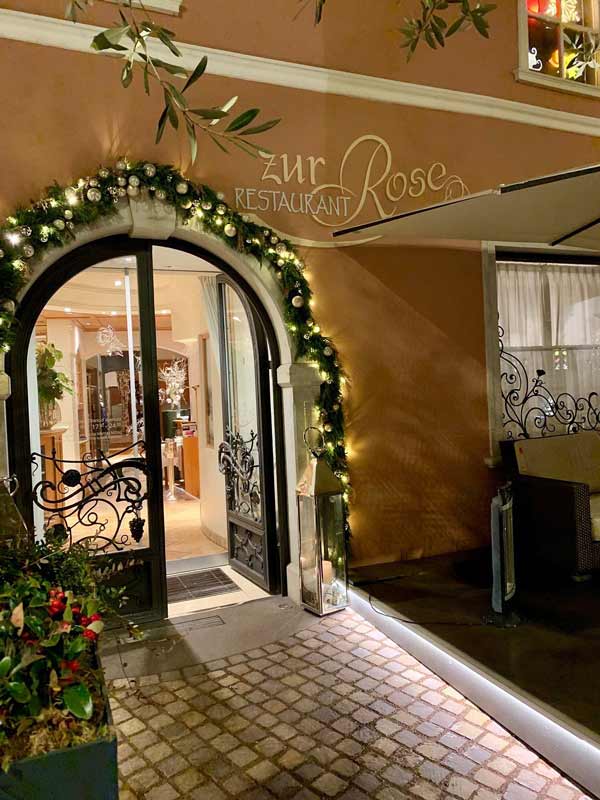by Raffaele Mosca
Coming from Bolzano, one crosses a narrow valley lined with steep terraces crowned by farms, small churches, and medieval manors. After a few bends in the road, the landscape begins to open up, yet Lake Kaltern remains barely visible until you’re practically on its shore. It is immersed in a sea of vineyards winding across sloping hills. It is the largest lake in the region, and the unusual appearance of its surface – almost resistant to light – is due to its shallow depth: no more than 5–6 metres. This also makes it the warmest lake in the Alpine arc: in summer, water temperatures can reach 28 degrees. This thermal regulation shapes the climate of the surrounding area: in the afternoons, a breeze similar to the Ora of Lake Garda rises, creating a microclimate less stifling than that of the nearby Bolzano basin. And it is here that special Schiava wines are born – wines that are now capable of competing even on an international level (our tastings here).

Vineyards and woods on Lake Kaltern (photo by Manfred Pernthaler). Opening photo by Helmuth Rier.
The climate is an essential element for viticulture, but it is only one of the many attractions that have made the village one of the main tourist hubs in South Tyrol, with an average of 700,000 visitors annually. Even a teetotaller would not risk boredom here, with options ranging from mountain biking to hiking along forest trails nestled between the mountains, trekking at 1,400 metres on the Mendola Pass – connected to the valley by one of the steepest and most scenic chairlifts in the region. There are also excursions along streams and waterfalls in the Rastenbach gorges, swimming and canoeing, summer concerts on the lake shore, spa and wellness facilities that blend Italian and Central European design, and both traditional and creative cuisine. And yet, without those old pergolas with twisted vines – a drop of red grape in a region increasingly dominated by whites – the place would hardly have the same charm.

The barrel cellar of Tenuta Dominikus. Photo by Mirko Strozzega.
“Tourism has in any case encouraged many winegrowers to go independent, leveraging direct sales,” explains Sarah Filippi, head of the Wein.Kaltern association, which brings together producers in the area: 26 members, two-thirds of whom cultivate less than 10 hectares. The proportion of organic and biodynamic producers exceeds 30%. All offer many different labels – including whites and sparkling wines – but the common thread is always Kalterersee Klassisch or Classico, a red based on Schiava (Vernatsch), light by definition, hugely popular in the region and German-speaking countries up until the mid-1980s.
Schiava, however, paid a heavy price for the rise of powerful, muscular wines in the decades that followed, losing ground to Bordeaux-style whites and reds. Today, it has all the qualities to make a comeback, but is barely surviving a trend that has led, regionally, to the uprooting of hundreds of hectares of Schiava in just a few years. “It’s a very delicate grape with a thin skin: it needs places that are neither too cold nor too hot. It’s right to replace it with other varieties where it has no vocation,” explains Thomas Scarzuola, winemaker at Cantina Kaltern.

The barrel cellar of Cantina Puntay (photo by Mirko Strozzega).
While Schiava produces pleasant wines in many parts of South Tyrol, Kaltern and the eight neighbouring municipalities that fall within the Classico designation for Kalterersee – distinct from the generic Caldaro DOC, which covers far too vast an area – are where it most frequently manages to transcend the stereotype of an extremely pale red meant for carefree vineyard picnics. “Subtraction” does not necessarily mean triviality: the delicacy of its tannins is an asset at a time when overly astringent wines clash with increasingly light cuisine.
The only obstacle may be its typically low acidity, which can result in a slightly flat taste. However, producers overcome this issue by harvesting early, practising rigorous selection, or planting the variety at higher altitudes. Whereas areas at the same level as the lake – around 200–300 metres – were once considered ideal, great results are now also being achieved between 400 and 500 metres, beyond which the grape still struggles to ripen.
Lightness means versatility at the table. The gentle acidity and almost imperceptible tannins make Kalterersee a viable option for many dishes, including vegetable-based ones with which other reds would clash: from simple spaghetti with fresh tomatoes to asparagus risotto, including various preparations with sour cream and horseradish, typical of South Tyrolean cuisine. It also works well as a white wine alternative for substantial fish dishes, especially when served at 14–16°C.
The traditional pairing in Kaltern, however, is with Kalterer Plent, the local polenta made from corn grown in the plains south of the lake, typically served with sausages, speck, and gorgonzola. The fresher, palate-cleansing Kalterersee wines also work well with the traditional – and very rich – version, but local restaurants tend to offer a lighter or reimagined take on the dish, such as versions with mushrooms or vegetables, or in the form of dumplings or crisps.

Where to eat and drink around Kaltern
The Wein.Kaltern association includes not just winegrowers, but also various artisans, including a butcher who uses Kalterersee to flavour his salami. There are also restaurateurs who are often also winemakers (or vice versa). For example, the Ritterhof winery hosts an inn with lake views offering updated South Tyrolean dishes, with particular attention to local products such as freshwater fish and wild asparagus.
In the centre of Kaltern, Spuntloch occupies the historic premises of the Peter Sölva winery; it offers both plant-based cuisine and a large fridge from which to choose South Tyrolean meats to grill on a lava stone grill. The wine bar at Castel Sallegg serves simple dishes and aperitifs with platters and tapas.
Outside the wineries, Seehofkeller features a beautiful terrace overlooking the lake and an indoor room housed in an old barrel cellar. The menu includes stuffed pastas, dumplings, venison goulash, as well as a few out-of-region and seafood options. Just a few kilometres north of Kaltern, in the village of Appiano on the wine road, chef Herbert Hintner is one of the pioneers of zero-kilometre cuisine in the region. He runs two venues: the fine dining restaurant Zur Rose, with a Michelin star and two forks in the 2025 Italian restaurant guide, and the Osteria Plantzegg in the market square, where he serves simpler dishes blending South Tyrolean and Mediterranean ingredients.
Producers are divided over whether Kalterersee improves with age: some believe it’s best right after release, while others argue that it gets better with time in bottle. The truth lies somewhere in between: of around 20 older vintages tasted alongside current releases and barrel samples from 2024, none showed signs of oxidation, but only about half were truly more interesting than the latest vintage or the 2024 barrel sample.
Among them, we highlight Der Keil 2019 from Manincor, Plantaditsch 2021 from Klosterhof, and Vigna Bischofsleiten 2021 from Castel Sallegg – the most successful in shedding youthful exuberance while retaining freshness and gaining aromatic clarity. These wines would probably stand up to more daring pairings… but they were simply perfect with a slice of wine-cured salami on bread and a view of the vineyards around the lake at dusk.

© Gambero Rosso SPA 2025
P.lva 06051141007 Codice SDI: RWB54P8 Gambero Rosso registrazione n. 94/2021 Tribunale di Roma
Modifica impostazioni cookie
Privacy: Responsabile della Protezione dei dati personali – Gambero Rosso S.p.A. – via Ottavio Gasparri 13/17 – 00152, Roma, email: [email protected]
Resta aggiornato sulle novità del mondo dell’enogastronomia! Iscriviti alle newsletter di Gambero Rosso.
© Gambero Rosso SPA – Tutti i diritti riservati.
Made with love by Programmatic Advertising Ltd
Made with love by Programmatic Advertising Ltd
© Gambero Rosso SPA – Tutti i diritti riservati